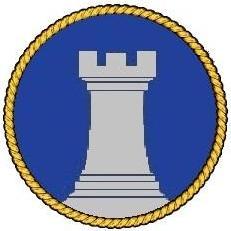
LayTheLine
Members-
Content count
76 -
Joined
-
Last visited
About LayTheLine
Recent Profile Visitors
2,053 profile views
-
dwcfireman liked a post in a topic: Consolidation of Fire Districts in Victor, NY
-
LayTheLine liked a post in a topic: Consolidation of Fire Districts in Victor, NY
-
LayTheLine liked a post in a topic: Consolidation of Fire Districts in Victor, NY
-
I forgot about this topic as well... over 2 years ago. Here is an opinion about your question of why EMS would be more open to consolidating and not fire. I may not have this right but here is my understanding. Ambulance services are allowed to bill for their services and collect Medicaid & Medicare payments as well as from private insurance companies. So there is money to be saved if you can consolidate the number of rigs in service and the amount of manpower on-duty. Example: Towns A,B,C,D each have their own ambulance service. Each town maintains 3 ambulances. Each town has 2 on-duty members with 2 back-up members for a 2nd ambulance call. If the personnel are paid, including the back-up crews when activated, it can increase your costs. Plus maintaining 3 ambulances both mechanically and outfitted with gear can be expensive. If you consolidated those 4 town ambulance services into 1, then perhaps you maintain only 8 ambulances (4 on-duty & 4 back-up). When a 2nd call or 3rd call came in, another on-duty ambulance would take it and hence not have to pay off-duty members to respond. If it's an MCI, then of course you'd put all 8 ambulances on the road and call in off-duty members. Fire departments don't charge for their services and can be a burden to a community's budget. It sounds good on paper to consolidate, but then you may have to spread out personnel to cover all the stations. Maybe Town A & B have 6 per shift, Town C has 3 per shift, & Town D has 1 per shift. Now, if all the towns are going to share the tax burden through a fire district you'd have to figure that people will want a certain level of coverage throughout. Perhaps the solution would be to spread out the 16 personnel equally to 4 per station. This would then necessitate a shift-commander for the newly created fire district. That isn't a bad thing, but if it's a combination career/volunteer department the remaining volunteers may lose interest as the responses are changed and the career staff ends up handling the majority of the calls by sending a piece from two stations (1 engine each) to a vehicle fire. The same with automatic alarms. Soon the volunteers would dwindle to the point of being an ineffective back-up force and the district needs to increase the on-duty staff (hire) to handle the call volume. There is something to be said for self-government where voters keep control of their own destiny. Conversely, to not be open to sharing equipment and responses doesn't help anyone. In the end there are many issues to be considered.
-
LayTheLine liked a post in a topic: Get Dispatches recorded live
-
AFS1970 liked a post in a topic: FDNY Runs & Workers 2018
-
AFS1970 liked a post in a topic: FDNY Runs & Workers 2018
-
vodoly liked a post in a topic: FDNY Runs & Workers 2018
-
vodoly liked a post in a topic: FDNY Runs & Workers 2018
-
Billy liked a post in a topic: FDNY Runs & Workers 2018
-
No worries. I had no idea you did it manually. Thought it was a cut & paste thing. I am a numbers guy and I work part-time as a copy editor. All good stuff, thanks for posting it.
-
LayTheLine liked a post in a topic: FDNY Runs & Workers 2018
-
I look forward to this list every year. To see the workload & breakdown the stats can keep me busy for hours!! Couple things I picked up on: 1) It shows Squad 18 as having responded to 120 runs all year. I am wondering if they mean Squad 8 and the stats for that company in December when it opened and then accidentally skipped over Squad 18. ??? 2) Engine 62 in the North Bronx sees a lot of work. From listing to the radio and reading the rundowns, it sounds like Division 7 (North Bronx) had a very busy year. It seems there were many "All-Hands or greater" within 1 mile of the Westchester County border. The Bronx in general seems to get their fair share of work. 3) I was surprised to see that Battalion 43 in Brooklyn, only responded to 18 "All-Hands or greater". I would have guessed more than that just based on the numbers for the surrounding Battalions (42, 33, 58). They are far below the 2nd slowest Battalion (47) which had 44 "All-Hands or greater". 4) You've got to love the City Island (Bronx) pieces that turn a wheel maybe once a day at best. But if they weren't there, along with what would be long-runs for any other unit going in first-due, you could lose 1/2 of City Island with one fire! It's a small area but the fire load is compacted pretty tight and you need to protect it. 5) Battalion 50 in Queens was the busiest with 200 "All-Hands or Greater" and they are always up there which makes sense because they are so centrally located and if they aren't the first chief in they are the 10-75 chief for many abutting Battalions. That's my VERY UNOFFICIAL first glance impressions.
-
LayTheLine liked a post in a topic: FDNY Runs & Workers 2018
-
vodoly liked a post in a topic: Mutual Aid Membership
-
LayTheLine liked a post in a topic: Mutual Aid Membership
-
LayTheLine liked a post in a topic: Cliffside Park NJ EMS
-
Very good information GBFD111. But to clarify, which department would be covering your insurance? The last sentence isn't clear to me. Thanks
-
LayTheLine liked a post in a topic: Mutual Aid Membership
-
LayTheLine liked a post in a topic: Hackensack Meridian Medical Center Ambulance
-
LayTheLine liked a post in a topic: Fort Lee Fire Dept Chiefs Suv
-
AFS1970 liked a post in a topic: Mutual Aid Membership
-
vodoly liked a post in a topic: Mutual Aid Membership
-
I've never heard of it called mutual aid membership, but times do change. I had to read the question twice. What I have always heard it referred to is dual membership status. It was very lax when it started back in the day, but I suppose with legal ramifications so prevalent that policies and procedures need to be in place. I'll be interested to see some of the responses.
-
vodoly liked a post in a topic: Job Shirts
-
I would agree that the word squad may designate anything, anywhere. I would say that the word is the most commonly used word in the fire service with multiple, multiple definitions.
-
As an add on to "bad box" comment. Last month FDNY put another squad into service. It's Squad 8 on Staten Island. It's in the quarters of E154. E154 was disbanded when Squad 8 went into service. FDNY now has a total of 8 squads. As eluded to in most of these responses, FDNY squads are enhanced engine companies. They run with an engine and carry a full-assortment of extrication and rescue equipment. Each squad has a 2nd Piece called a Haz-Mat Tech unit. Whenever there is Haz-Mat call anywhere in the city, a squad (with their second piece), Haz-Mat Company 1, and the Haz-Mat Battalion are assigned. Manning on the FDNY squads is 6 (1 officer & 5 firefighters).
-
LayTheLine started following Another odd unit, this one from Germany.
-
Very unique piece of apparatus. My question is: with a pair of front axles so close together, I assume that it must be a twin-steer axle. If not, the turning radius must be horrible. To top it off it's a cab-forward so I would think learning to drive it and to really get a feel for it must take some practice. Any thoughts?
-
LayTheLine started following Looming Layoffs in the City of Newburgh FD
-
Best of luck to the NFD. Happy to see the politicians are speaking up. If my math is correct, that's 25% of the staff on the floor! I'd assume they'd keep 3 at the sub-station and then drop to 3 on the HQ engine, 2 on the ladder, plus the Assistant Chief. Totally unacceptable. Before looking it up, I figured a city of 28K in 5 square miles would be running 3 or 4 engines and would have about 17 or 18 per shift. How are they going to cover a CITY with 9 guys?
-
Very helpful AFS1970. I'll have to save this thread. Thanks!!
-
Thanks guys, just what I was looking for. A lot easier when listening to the scanner.
-
LayTheLine started following Current Stamford Fire Rescue
-
Hopefully, Alan, AFS1970 can answer this question: This is not intended to open old wounds about the merger of the fire departments in the City of Stamford. What I am interested in is what is the current organization of the department(s)? Staffed stations, location of career engines & ladders, manning per piece, response of volunteers in supplement of career staff? Does the career department respond to every call with some type of response from Long Island Sound up to the New York State border as well as East to West boundaries? I'm just curious about the current status of what the City runs, not the past or future plans. Thanks, LayTheLine
-
LayTheLine started following Alpha, Bravo, Charlie Delta
-
I'm a little confused about two things, can anyone please clarify? 1) The E response says closest Haz-Mat, Fire Marshall, etc. Would this include fire departments that send an engine or rescue first due because they don't have an ambulance? Or is a fire department that runs EMS with no ambulance considered part of the BLS response? Example: Croton Falls Fire responds to EMS calls and North Salem VAC transports. Does Croton Falls only go on E codes, or are they considered part of the BLS response and go on all B,C, D, & E calls? 2) The C response confuses me. Why would you respond a BLS ambulance emergency and ALS non-emergency? My thinking is that most ambulances are BLS and the ALS comes in a fly-car. So if the call was in Armonk, why would the ambulance respond emergency but the ALS vehicle is coming non-emergency from Northern Westchester Hospital? It would seem to me that Armonk BLS ambulance could beat the ALS fly-car by 20 minutes if they were going emergency and the ALS was coming non-emergency. I guess my question is what types of calls fall into this category? Thanks for any feedback!
-
FireMedic049 - Question for you: I'm guessing that with 21 FT personnel, that there are 4 groups of 5 and the chief. The PT personnel are assigned to one of 4 groups which would be 3 PT per group. So if the FT staff is on-duty that would give you a minimum of 5 and if 3 PT staff are on-duty that would bring you up to 8. Of course it could vary anywhere between 5 and 8. Am I correct? Also, is there a minimum number of FT personnel that must be on-duty? Example: 3 must be FT and 2 can be PT to make up the minimum of 5. Just curious how all that works.


